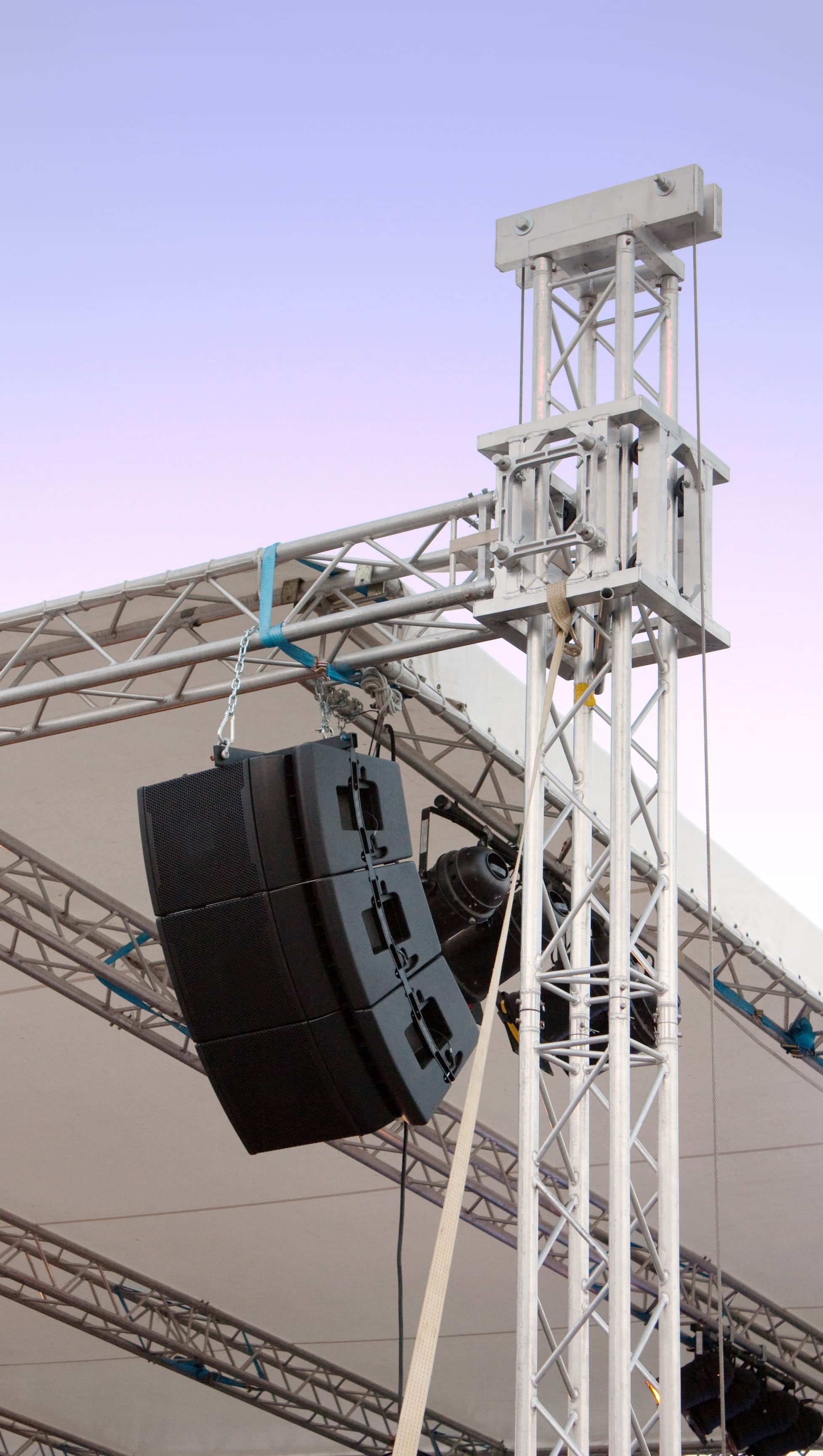Line Array Speaker Rental
- We recommend you should take a setup with line array speaker rental.
- Line array speakers aren’t one single tap unit, but rather are made up of loudspeaker cabinets.
- Sound can be focused on the audience and won’t reflect on surfaces.
- Sound keeps its level consistent as it travels. That way, the audience members at the back of the venue are served equally as those at the front.
- The longer the array, the more tightly directional within the vertical dimension sound will be.
- Well-paired individual cabinets into the array might need to all be small vertically in order for the beam of sound to be more controllable from the array
Line Arrays
While column loudspeakers performed well back in the day, they didn’t have adequate scale or science. levels drop by 6 decibels for each doubling of distance. But the level does not drop at all with the plane source. However, the line source drops by 3 decibels for each doubling of distance, which theoretically can generate a cylindrical wave instead of a spherical wave of the point source. True cylindrical waves would have 360° dispersion in the horizontal dimension, and no dispersion in the vertical dimension.
In order to achieve focus, a sound source must be in the vicinity of around four times the wavelength. Wavelengths of audible sound reach 17 meters (20Hz) and more. However, a lower frequency of 170Hz with a wavelength of two meters will require line sources to be eight meters high.
To make loudspeakers many meters high, stacking many loudspeakers on top of each other is often necessary. However, rather than stacking 10–inch loudspeakers with poor HF response, every loudspeaker features LF and HF drive units that cover the entire audio range. In addition, instead of making a very tall cabinet, modern line arrays feature many smaller cabinets. The advantage here is that a line array can be assembled as large or small as you desire. The shape of the array can also be modified.
Line arrays aren't one single tap unit, but rather are made up of loudspeaker cabinets. Individual units will need to be paired together, but only when the drive units are separated by under half a wavelength. While simple for lower frequencies, it’s more challenging as wavelengths shorten. As a general rule of thumb, 400Hz wavelengths are approximately 85cm.







